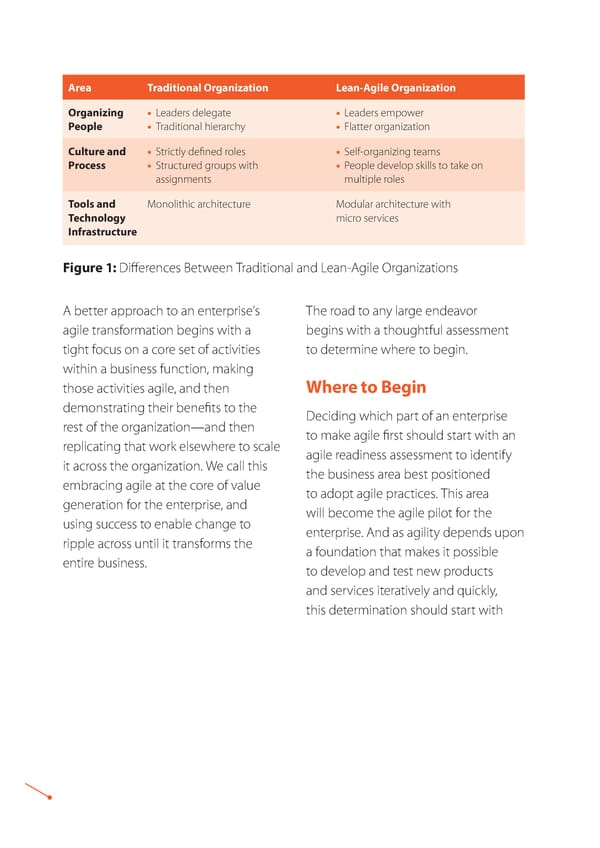Area Traditional Organization Lean-Agile Organization Organizing € Leaders delegate € Leaders empower People € Traditional hierarchy € Flatter organization Culture and € Strictly defined roles € Self-organizing teams Process € Structured groups with € People develop skills to take on assignments multiple roles Tools and Monolithic architecture Modular architecture with Technology micro services Infrastructure Figure 1: Differences Between Traditional and Lean-Agile Organizations A better approach to an enterprise’s The road to any large endeavor agile transformation begins with a begins with a thoughtful assessment tight focus on a core set of activities to determine where to begin. within a business function, making those activities agile, and then Where to Begin demonstrating their benefits to the Deciding which part of an enterprise rest of the organization—and then to make agile first should start with an replicating that work elsewhere to scale agile readiness assessment to identify it across the organization. We call this the business area best positioned embracing agile at the core of value to adopt agile practices. This area generation for the enterprise, and will become the agile pilot for the using success to enable change to enterprise. And as agility depends upon ripple across until it transforms the a foundation that makes it possible entire business. to develop and test new products and services iteratively and quickly, this determination should start with
 The Essence of Agile Page 4 Page 6
The Essence of Agile Page 4 Page 6